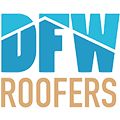Texas is no stranger to harsh weather. Whether you’re trying to file a claim after sustaining roof damage or just want to find home insurance that will protect your property for the years to come, this guide is a great place to start. DFW Roofer created this insurance series to help Texas homeowners understand common types of coverage, how claimworthiness is determined, what you can expect from the claims process, and how you can protect yourself from low-quality or fraudulent insurance scams.
For more information on home insurance and roof damage in Texas, you can read the associated guide to learn about:
- Filing claims for roof damage
- What homeowners can do if their claim is denied
- Understanding Texas’ insurance carriers
- Red flags to know in Texas’ shady roofing market
- Understanding the types of insurance adjusters
- Learning how roof repair claims are calculated
- The problem with waiving deductibles
Your Insurance Coverage Matters
According to the Texas Department of Insurance, most home policies cover storm damage — including damage due to sudden bursts of water, though not due to slow continual leaks. Our guide to Texas insurance carriers provides an overview of the insurance market.
Understanding RCV, ACV, Deductibles, and Policy Limits
In Texas, there are two primary types of coverage: Replacement Cost Value (RCV) and Actual Cash Value (ACV).
- RCV covers the full cost of repairing or replacing your roof without accounting for depreciation (a loss in value due to age and wear). Homeowners with RCV coverage will typically pay a deductible while their insurance covers the rest.
- ACV, on the other hand, covers the replacement cost of your roof minus years of use (depreciation) at the time of the claim. So, homeowners with ACV coverage may have to pay more out-of-pocket since the payout is lower due to depreciation.
Deductibles are the dollar amount or percentage you need to pay out-of-pocket before your insurance kicks in. Unlike health insurance, where a deductible is considered over a year, home insurance deductibles are applied to each claim. Typically, higher deductibles are found in lower-cost policies, and lower deductibles are found in higher-cost policies.
Policies also have a dollar limit over which coverage ends. Make sure your policy’s dollar limit is enough to cover your property in the event of a total loss – otherwise, you’ll have to pay the difference yourself. Many homeowners get confused about where to find information about their deductibles. While you could call your carrier, this information can be easily found on your policy.
Is Your Damage Claim-worthy?
What makes damage claim-worthy? If your roof has suffered damage and you’re wondering what your next step should be, schedule an inspection with a contractor. Our team will assess the severity of the damage and help you determine whether filing an insurance claim makes sense for your situation (filing a claim can impact your insurance premiums or renewals in the future).
If a claim is recommended, we’ll walk you through the process step by step. If not, we can offer a competitive cash quote to restore your roof and extend its lifespan.
Understanding the Claims Process
For even more detail, see our guide to the insurance claims process. In a nutshell, here’s how it works:
- Step 1: Initiate the Claim with Your Carrier.
- Step 2: Schedule an Adjuster Inspection.
- Step 3: Receive Payout and Begin Repairs.
- Step 4: Complete Repairs and Submit Certificate of Completion.
But there’s much more to the story than just four steps. For instance, adjusters can be in-house employees of your carrier or third-party adjusters. In-house adjusters typically have a good track record of writing fair claims, while third-party adjusters, hired when in-house adjusters are overwhelmed, can be a bit less predictable. It can be useful to know the difference.
Likewise, your payout may be determined with Xactimate, a software used by adjusters to estimate repair costs using local material and labor prices, or other services that have several contractors quote or bid the costs to homeowners. Understanding how your estimates are generated and why can bring some clarity to the process.
Safeguarding Yourself from Insurance Fraud
As the Texas Department of Insurance (TDI) states, protection fraud occurs when people “lie or misrepresent facts for financial gain.” This can involve luring homeowners in by waiving deductibles, and then overcharging their coverage by sending in false information. There’s no gray area here — the TDI states, “That would be fraud. And a contractor who offers to waive your deductible is likely making up the difference by cutting corners or using lower quality products.”
Such concerns arise from Texas’ underregulated roofing market, which doesn’t require contractors to be licensed. As a result, homeowners will encounter misinformation, shady practices, and even outright fraud. That’s why it’s so important to work with reputable contractors who follow legal requirements and ethical practices — such as charging deductibles, using high-quality materials, and following best practices to ensure durable repairs.
Home Insurance Questions? We’re Here to Help
Understanding home insurance and roof damage in Texas is essential for homeowners. If you have any questions or need assistance with damage, contact DFW Roofers at (469) 751-4018 or schedule an appointment through our online appointment form below.


